We’re now five games into the 2024 Allsvenskan season for most sides, and reigning champions Malmö, under the guidance of highly regarded manager Henrik Rydström, who helped the club to their 23rd Swedish top-flight title last season, have begun their attempted title defence in style, winning each of their first five league games this term.
Their closest rivals in the league, at the time of writing, are AIK — another side with a prestigious history in Swedish football, with 12 league titles to their name.
AIK are competing under the tutelage of three-time Premier League winner and 1998/99 UEFA Champions League winner — the latter of which was achieved with Manchester United, the former being achieved both with the Red Devils and Blackburn Rovers, Henning Berg.
Berg had a playing career that would be the envy even of some highly successful greats of the game in terms of silverware. While he hasn’t exactly reached the same heights as a manager just yet, he has achieved a fair amount of success, which is not to be played down, including a Polish Ekstraklasa title with Legia Warszawa and, more recently, a Cypriot top-flight title with Omonia Nicosia.
Now managing in Sweden for the first time in his career, Berg has got off to a fairly positive start in terms of results, successfully taking his side to the semi-finals of the Svenska Cupen, only losing out on penalties to Djurgårdens, who will face Malmö in the final on the first of May, while his side remains one of only two yet to lose a game in Sweden’s top-flight this term.
That said, this tactical analysis piece is not going to be a positive appraisal of Berg’s achievements with the team thus far or an explanation of why they’re the closest to Malmö at this point in the campaign. Rather, it will be a critical analysis highlighting some concerning underlying numbers that spell disaster for Berg’s side unless things change quickly.
We’ll begin with some data analysis highlighting a critical area within AIK’s game that’s currently lacking before progressing into some tactical analysis of where exactly things are going wrong on the pitch to lead to the worrying numbers we’ve identified and what must be done to improve Gnaget’s performances and tactics.
Let’s get into it.
AIK’s chance creation conundrum through numbers
As the title of this section suggests, AIK is struggling in the chance creation department right now. This isn’t obvious if you look purely at goals, with Berg’s side having netted eight in five games—the fifth-highest total in Allsvenskan at this point in the campaign.
However, their xG sits at 5.78, the sixth-lowest in the league, while their xG per shot is currently the fourth-worst in Sweden’s top flight at 0.096.
In addition to this, though AIK have the second-best defensive record in the league, conceding just three in five games, they’ve conceded a whopping 9.09 xG — the fourth-highest in Allsvenskan — a clear indicator of unsustainable overperformance from Berg’s side at this point in the campaign.
While their total of 11 points puts them second on the table right now, their expected points of 4.9 put them sixth from bottom, which is probably a more realistic position based on the quality of their performances, especially going forward.
Indeed, it would appear from the above numbers that their defence is where things are really failing, but the reasons behind the high amount of chances conceded, and low amount of chances created converge somewhat in the team’s failure to generate enough chances and make use of the ball when they have possession.
Far too often, they’re ultimately failing to test the opposition’s goal and conceding possession far too easily, thus also allowing their opponents to attack them more frequently. Their failure to make sufficient use of the ball when they have it is directly helping the opposition to enjoy more opportunities to create chances against them, some of which have led to very high-xG opportunities that AIK have, at times, been quite fortunate not to concede from.

Firstly, AIK fall fourth-last for positional attacks created per 90, bettering only bottom-of-the-table Kalmar, along with Norrköping and Halmstad in that particular statistic, defined by Wyscout as: “Any open play attack (A possession that doesn’t start from a set piece. The possession should have at least one successful action in the opposition final third to qualify as an attack) that is not a counterattack.”
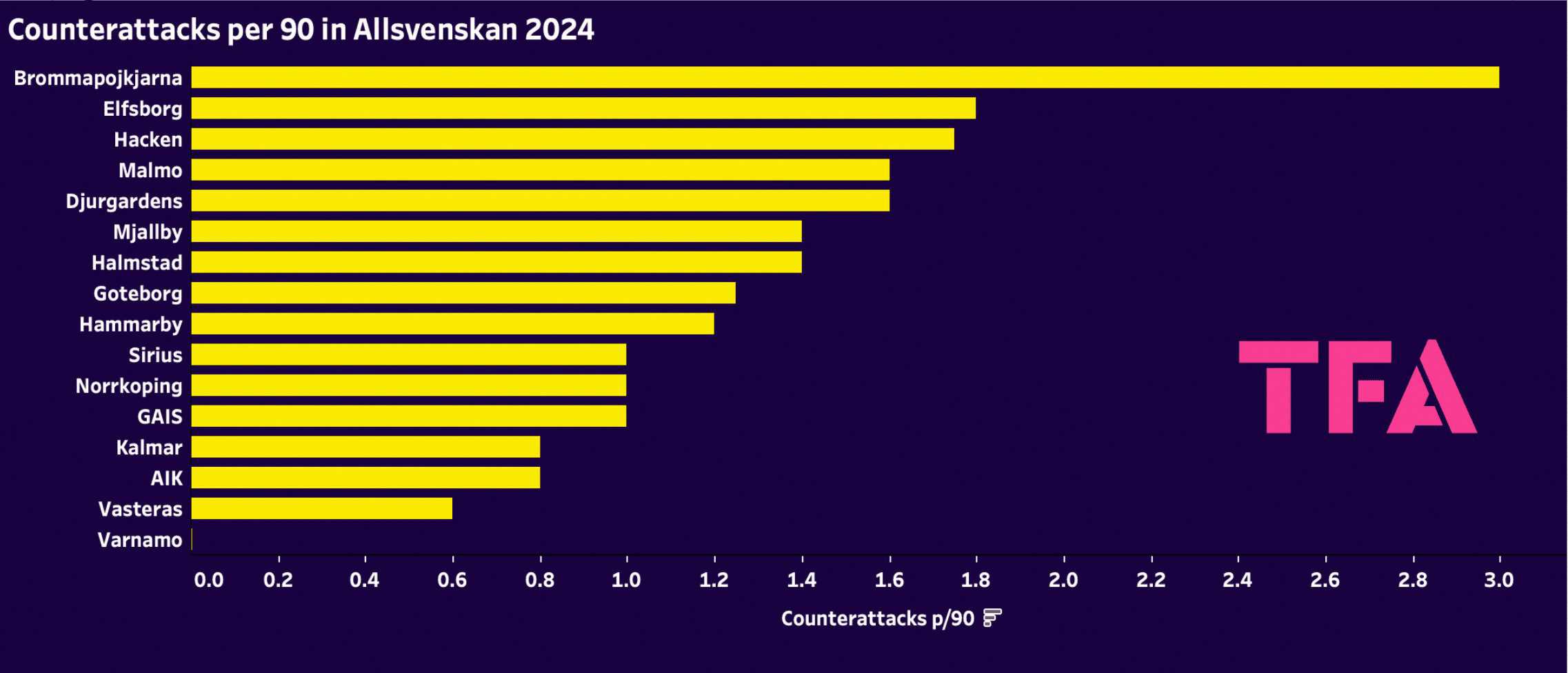
Meanwhile, AIK sit joint-third bottom of the counterattack table, level with Kalmar this time, bettering only third-from-bottom of the league Värnamo — who are yet to generate a single counterattacking chance so far this term — and second-from-bottom of the league Västerås.
This isn’t exactly the kind of company AIK want to be keeping when it comes to their chance creation and is indicative of the importance that counterattacks play in teams’ ability to score goals and ultimately get points on the board.
AIK have been fortunate to do so in spite of their poor chance creation so far this term, but that is unlikely to continue for long should they keep putting up numbers like these in both positional attacks and counterattacks.
So, the next natural question you might ask — why are AIK performing so poorly in attack?
Overreliance on the right half of the pitch and Omar Faraj’s usage
Gnaget play a 4-4-2 under Berg, with Omar Faraj playing just off centre-forward Ioannis Pittas as a second striker.
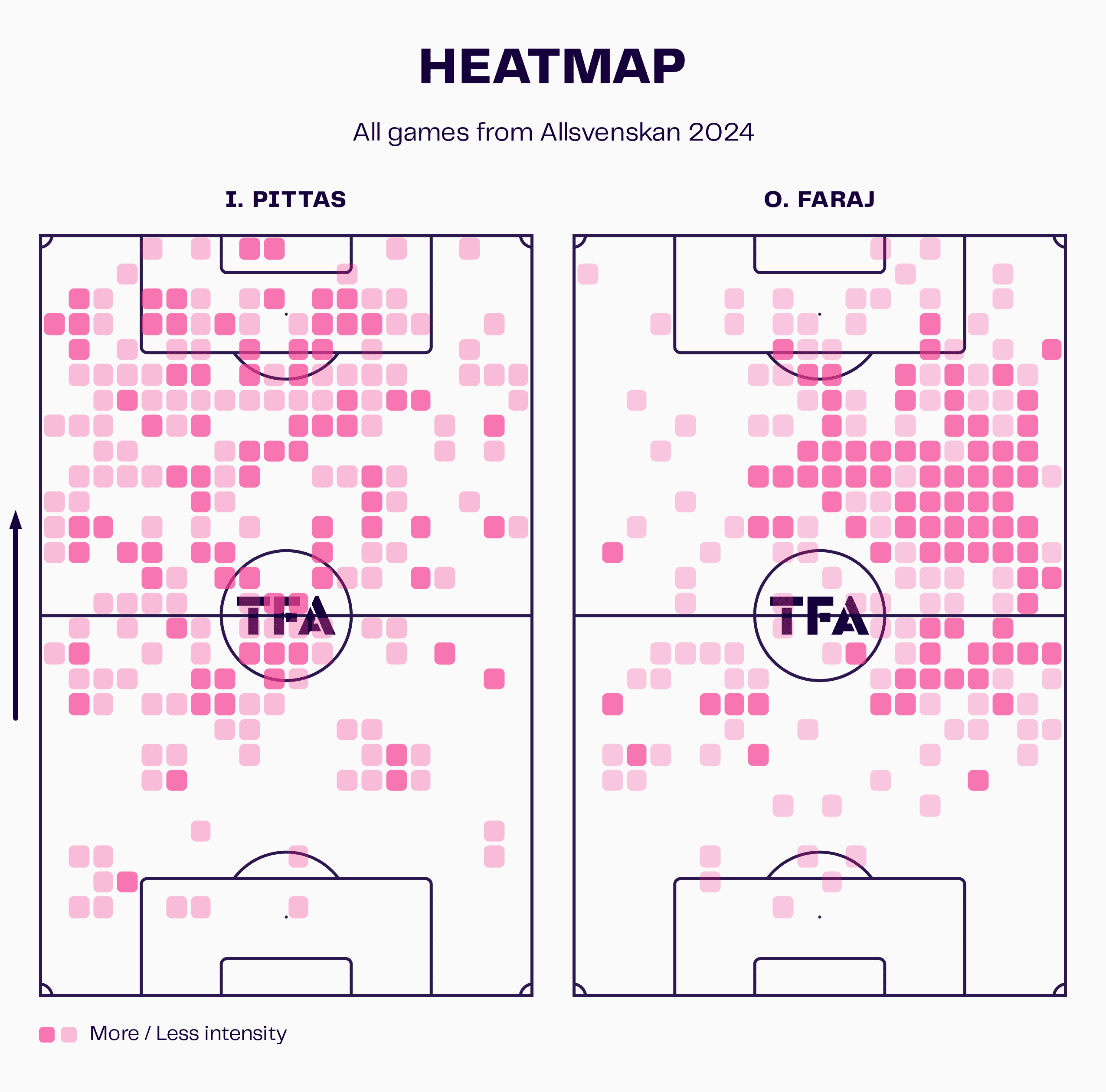
As shown by the heatmaps above, while Pittas generally stays central and is mostly active inside the penalty box, Faraj gets involved heavily in the right half-space, which is his favourite spot to drift into as his team attempts to progress play. The second striker frequently acts as a link between the backline and attack by dropping off into this area and making himself available as a passing option when his defenders are attempting to build an attack from deep.
Faraj has been one of AIK’s most significant creative threats this term as it pertains to expected assists, with 0.87 to his name so far. The only AIK player to have generated more expected assists than Faraj at this point in the campaign is right-winger Rui Modesto, with 0.99.
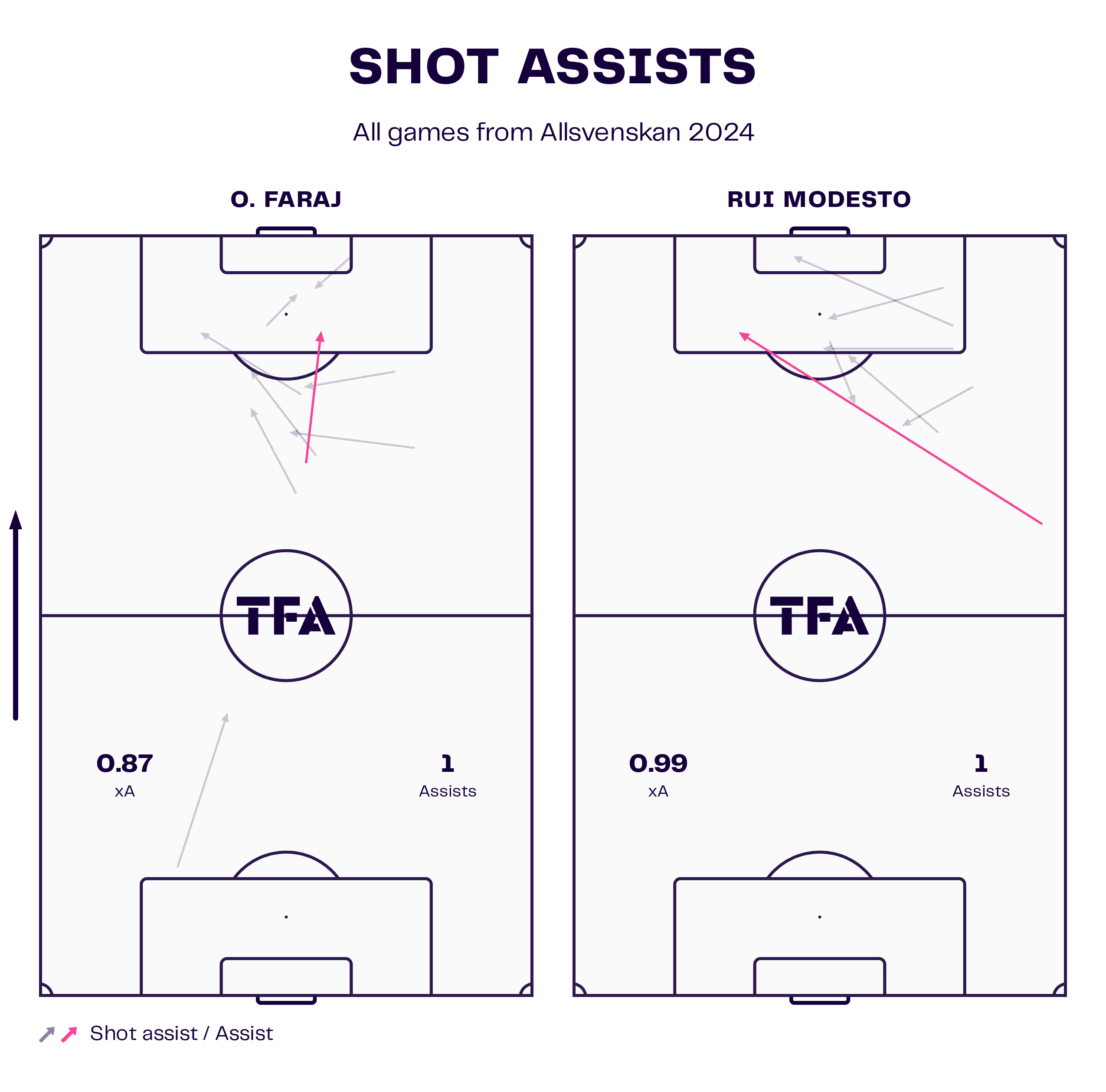
Though Faraj is a central attacker on paper, he spends the majority of his time on the right and rarely ventures out to the left. So, AIK’s two main creative threats are effectively located right beside each other. This in and of itself isn’t a massive issue — after all, you could still have good creative assets on the left even if your most prominent duo are located on the right.
However, AIK are seriously lacking in alternative playmakers to the main two mentioned above, with deeper central midfielder Bersant Celina following Faraj in third place with regard to xA but on 0.51 — a notable drop from Faraj’s total to date.
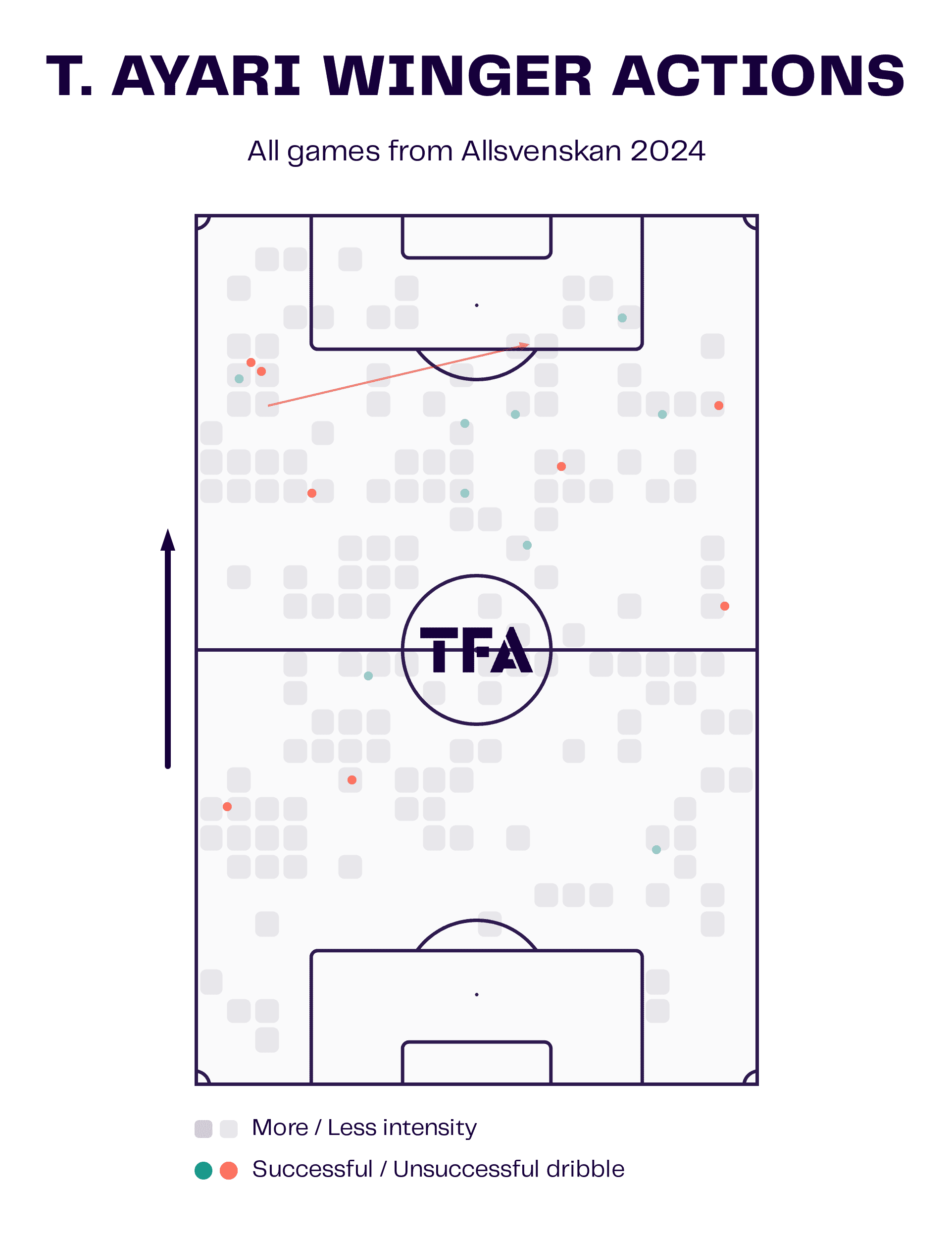
Taha Ayari is probably Gnaget’s most prominent creative threat off the left. Frequently deployed on the left wing, the 18-year-old is a fairly high-volume dribbler and a brave line-breaking passer. However, his end product is significantly lacking and unless that improves fast, he’s not going to pose enough of a threat to provide any semblance of balance to AIK’s attack.
Additionally, it’s common to see the young winger come inside quite early and pick up the ball in more central positions, with many of his successful dribbles occurring in the middle of the park rather than out on the left wing.
It’s obvious that AIK’s main creative outlets are positioned on the right when watching them play, as the team heavily favours the right hand-side of the pitch with their build-up and ball progression play. The opposition is often able to sit in extremely compact banks in the mid-low block phases to thwart AIK’s attempts at entering the final third due to their lack of threat on the left, which is a major reason as to why Gnaget have struggled to create much at all from open play this season.
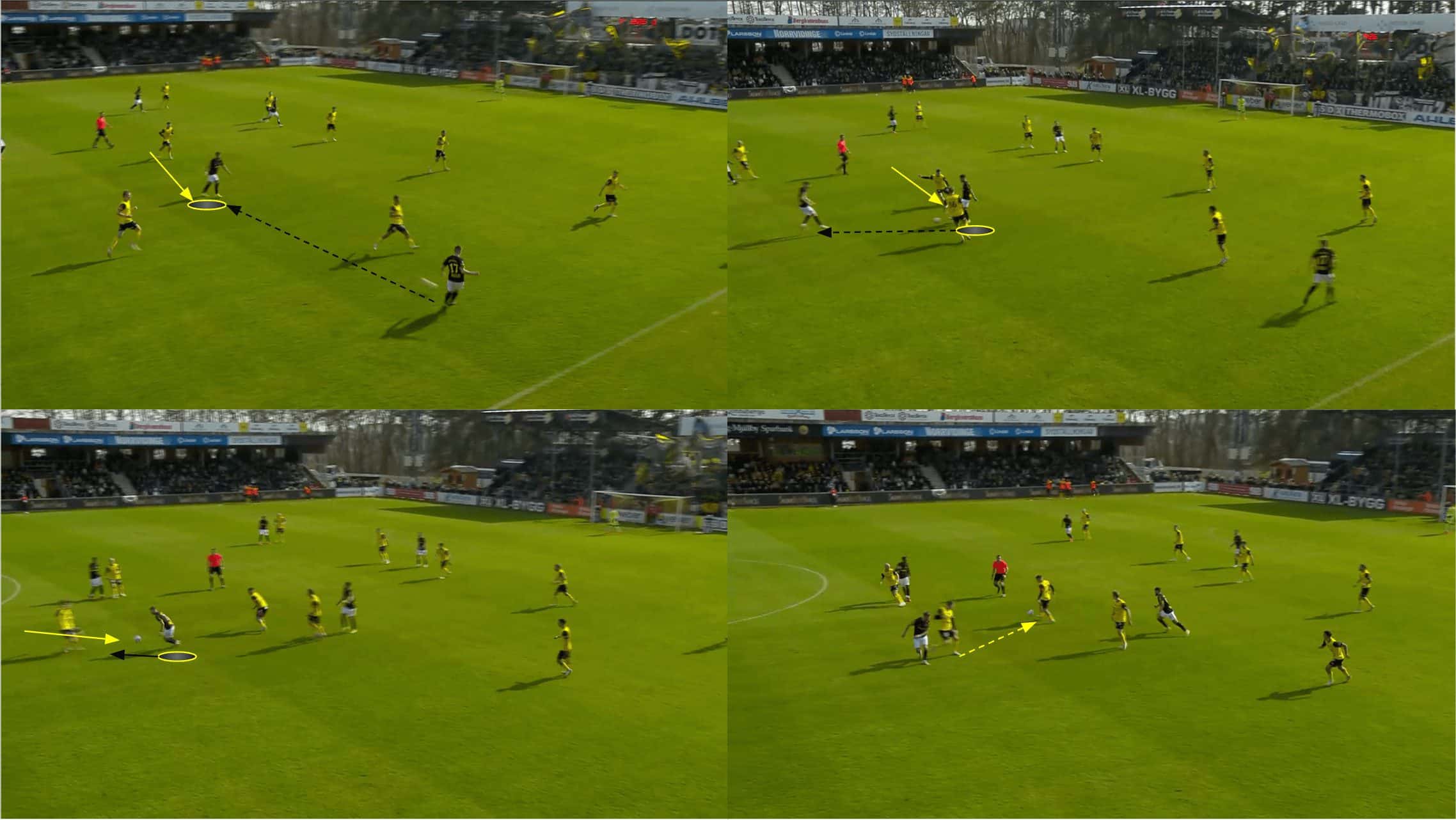
Another notable issue in AIK’s attack is the way in which Faraj has been utilised. A very capable and threatening dribbler with pace to burn when facing goal, the forward has frequently been required to receive with his back to goal and defenders hot on his tail thus far in 2024. This doesn’t particularly suit the 22-year-old who struggles physically, at times, when stronger defenders engage him in defensive duels with his back to goal.
Faraj needs to be able to use his pace, agility and quick reactions, but he hasn’t really been able to do that very well this term which can lead to attacks breaking down as we see in figure 6.
So, on one hand, the opposition are able to have a lot of players close to AIK’s attackers when they receive, denying them much space, due to the lopsided nature of their attacking balance. At the same time, they have attackers who struggle in tight spaces and thrive when they’ve got large open spaces to run into, like Faraj, playing in prominent creative roles. The result is they’re not getting the best out of their key attackers, leading to the dreadful chance creation numbers we showcased above.
Crossing issues
A lack of balance and potential issues with player roles aren’t the only causes of AIK’s worrying underlying offensive numbers, however. They also have significant problems when it comes to their crossing, both in terms of delivery and movement in the box to convert the ball.
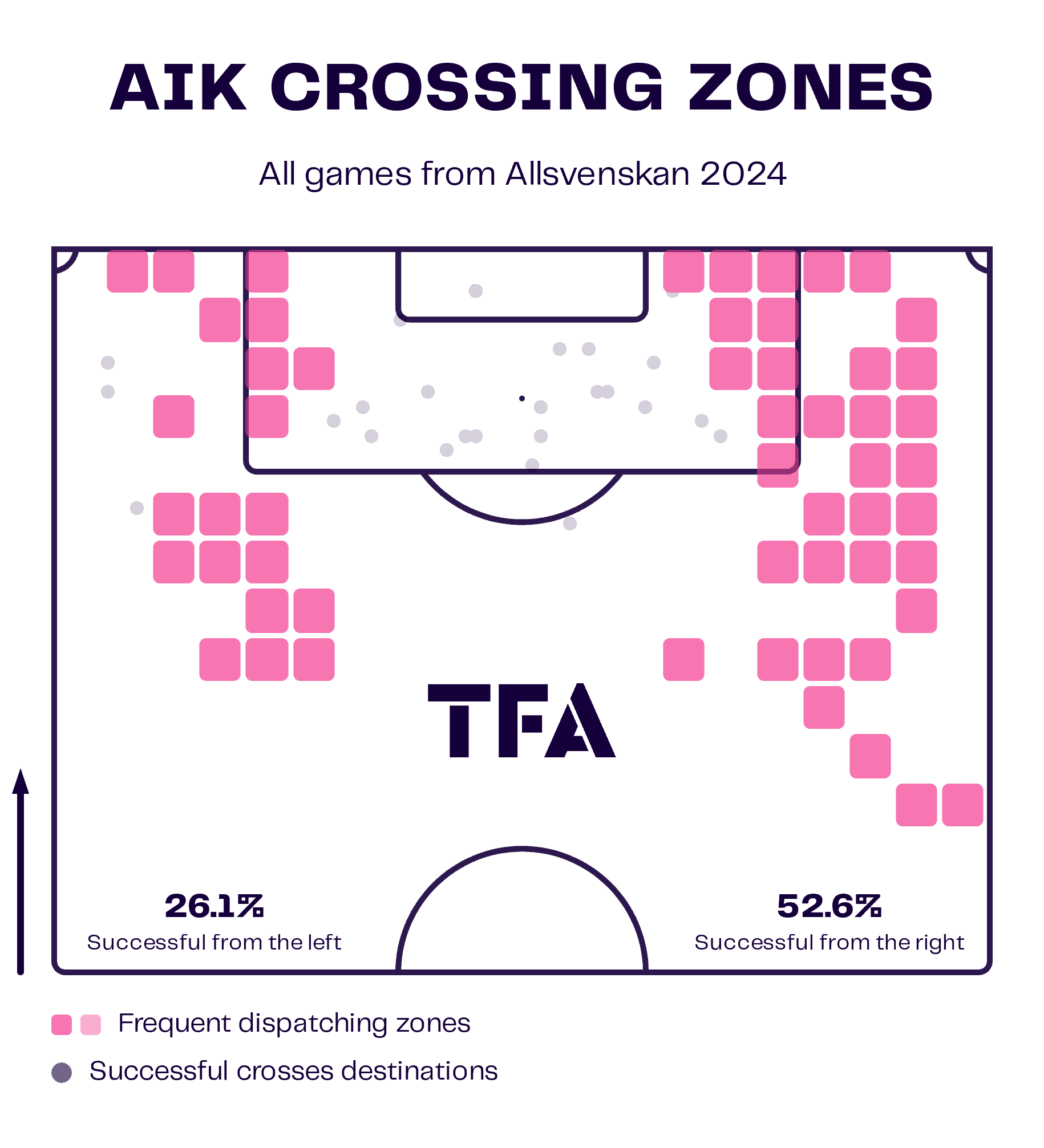
Looking at figure 7 after having read the previous section, it’ll come as no surprise to you that AIK are having more cross success from the right than the left. However, their crossing has been far from a net positive on either side of the pitch this term.
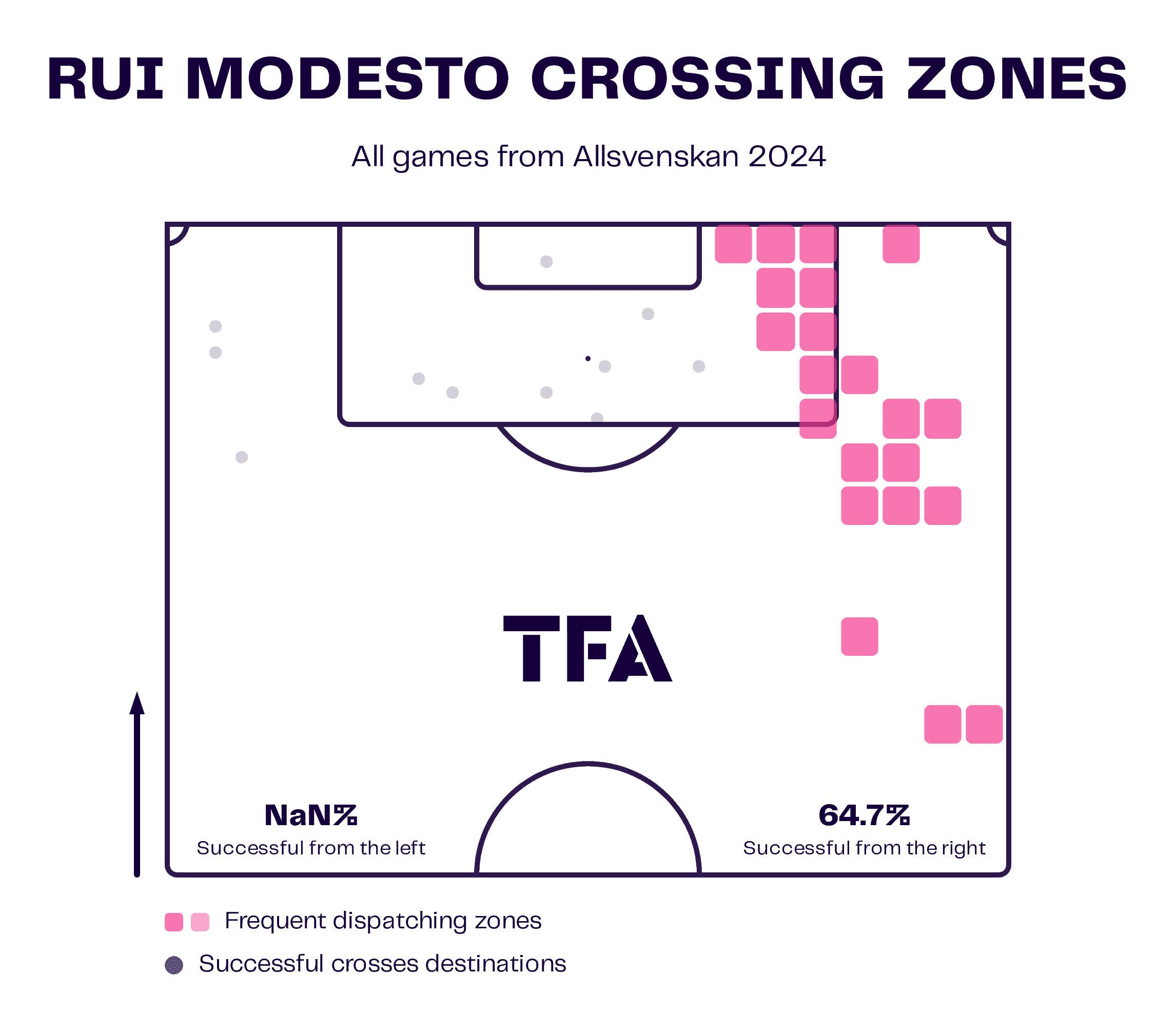
The one saving grace in AIK’s crossing game this term has been Rui Modesto, who’s achieved 64.7% cross success and generated some decent chances via his delivery from the right.

However, while Modesto has made 3.14 crosses per 90 for Berg’s side this term — third-most in the team — right-back Mads Døhr Thychosen has been Gnaget’s most frequent crosser of the ball with 3.46 per 90, but he’s achieved just 36.4% success.
Meanwhile, left-back Axel Björnström has put up some unimpressive numbers on the left, succeeding with just 11.1% of his 1.66 crosses per 90. It isn’t just a lack of presence on the left that’s hurting AIK’s attacking balance; there has also been a lack of attacking quality out wide on that side of the pitch thus far in 2024.
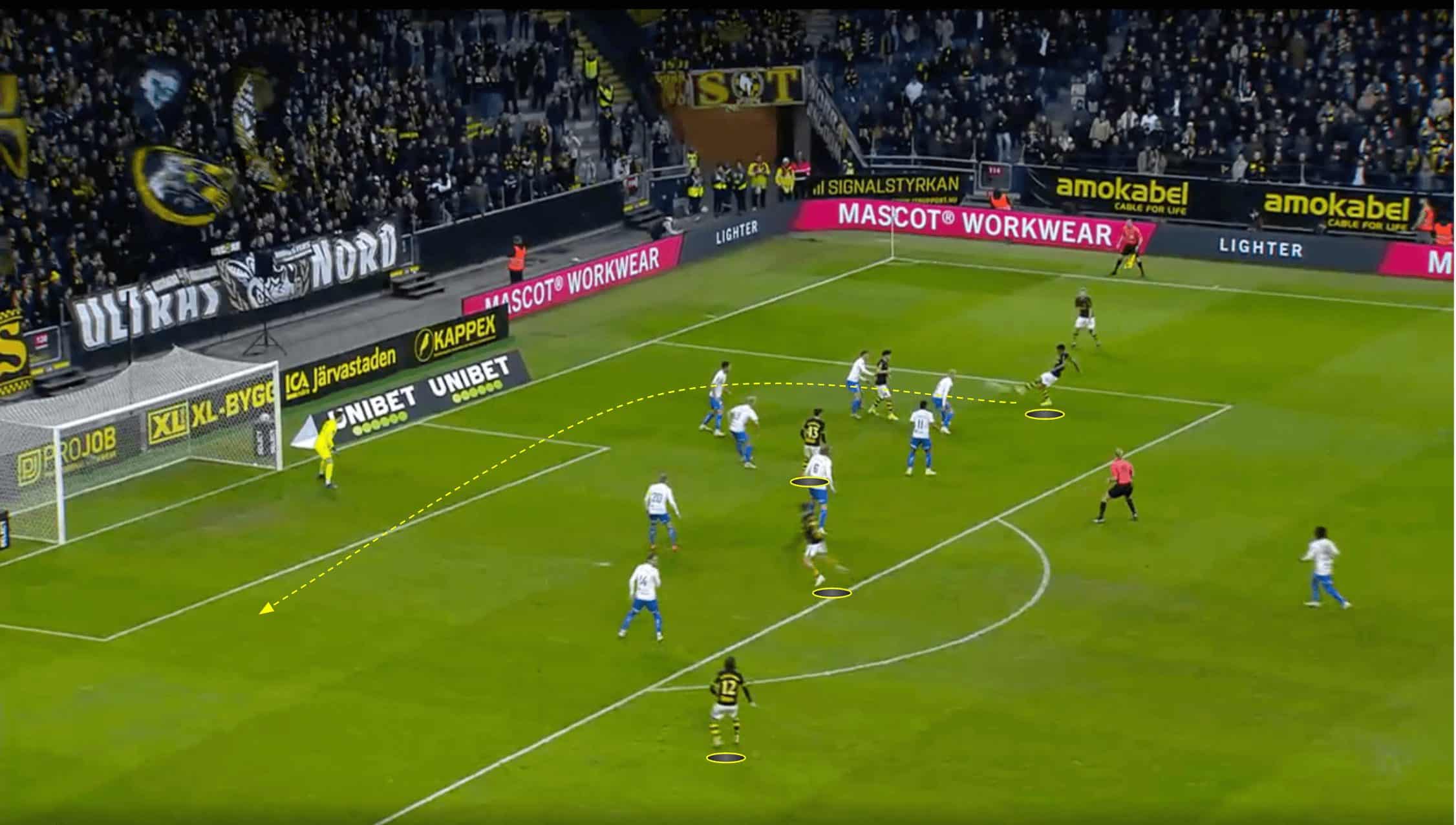
In addition to delivery, the lack of options in valuable goalscoring positions has been a frequent issue for AIK when it comes to threatening from crosses this season. Figure 10 provides a great example of this — in this instance, the ball is delivered well into the right area to potentially cause problems, but no attacker has made the necessary run or positioned themselves in a good enough position to provide the crosser with a decent option or really threaten the goal.
The opposition defence can relax here, comfortable with the AIK attackers’ positioning and distance at which they’ve put themselves from the goal.
It’s necessary for Berg and his coaching team to instill better runs and more intelligent offensive positioning in his attack if his side are to avoid a steep drop down the table over the coming game weeks, in all likelihood.

As mentioned earlier, Pittas has been AIK’s most prominent shot-taker throughout 2024 thus far, but one brief look at his shot map for the campaign to date highlights that he’s not taking anywhere near enough shots from high-percentage areas.
Almost all of his 15 shots in the league this season have come from low-quality positions, hence his xG per shot rate of 0.09.
Better shot selection, movement and positioning is badly needed for AIK at the business end of the pitch if they’re to get their attacking numbers moving in the right direction.
Conclusion
To conclude this scout report on AIK’s poor underlying numbers in the attacking phase, it’s clear that while Berg’s side have seemingly started the season off positively on the surface, a quick look into the team’s performances paints a very different and quite concerning picture.
Still, we’re in the very early days of the season and there is time for Berg and his team to get things moving in the right direction, but acknowledgement of the underlying issues and a concerted effort to fixing the problems is necessary now. Otherwise, we’d expect to see AIK begin to drop down the table quite sharply fairly soon.





Comments